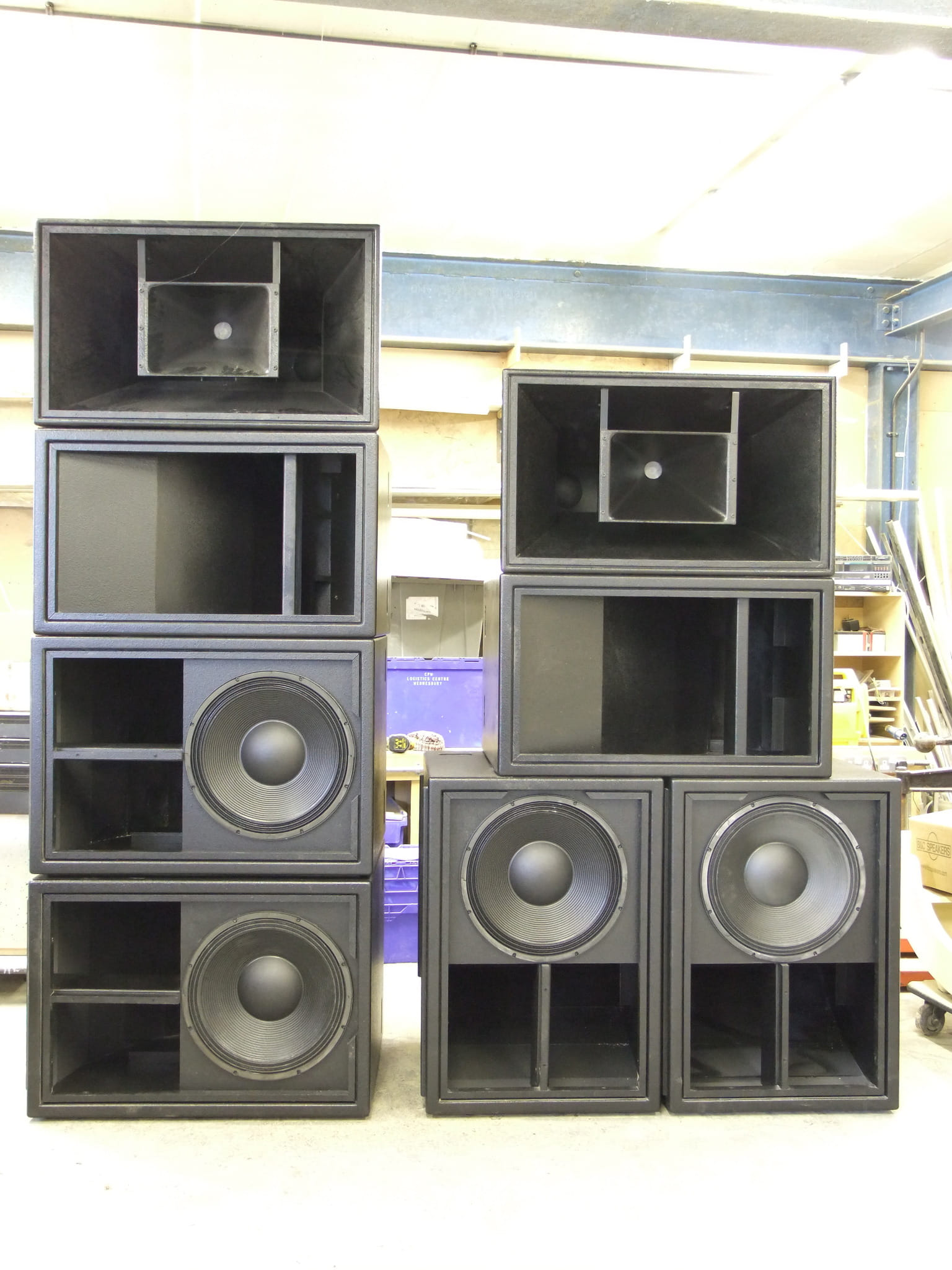- Posts: 1344
- Thank you received: 12
Types of wood joints
- tony.a.s.s.
-

- Offline
- Moderator
-

The same principal applies to grooves. It must be very tempting to machine an 18mm groove and slide the panel in, but there is no control over size variations. So it is better to machine, for instance a 9 mm groove, and make a tongue on each side creating a shoulder size. It then doesn't matter if your groove goes deeper than it should because the shoulder that you create keeps everything constant. This is very important when assembling horn cabs. I hope this clear and helpful.
Peace and goodwill to all speaker builders
Please Log in or Create an account to join the conversation.
- bee
-
 Topic Author
Topic Author
- Offline
- Platinum Member
-

- Posts: 2090
- Thank you received: 34
Please Log in or Create an account to join the conversation.
- dj maca roots
-

- Offline
- Junior Member
-

Tony.A.S.S. wrote: The rebated joint should prove to be the most useful joint to use. The added area for gluing is only secondary to the most important part. When you rebate a panel you create a shoulder, and that is the key to accurate assembly. All ASS cabs were made working from inside dimensions. The importance of this is that when you buy 18mm ply, sometimes it can be 17mm or up to 19mm. When you work from a shoulder size, everything remains constant and you throw the tolerance to the outside.
The same principal applies to grooves. It must be very tempting to machine an 18mm groove and slide the panel in, but there is no control over size variations. So it is better to machine, for instance a 9 mm groove, and make a tongue on each side creating a shoulder size. It then doesn't matter if your groove goes deeper than it should because the shoulder that you create keeps everything constant. This is very important when assembling horn cabs. I hope this clear and helpful.
What would the rebated panels look like?
Thanks for your help.
Eternal Party At The End Of Time
Please Log in or Create an account to join the conversation.
- mykey
-

- Offline
- Elite Member
-

- Posts: 167
- Thank you received: 0
Anyone got any ply?
Please Log in or Create an account to join the conversation.
- dj maca roots
-

- Offline
- Junior Member
-

Eternal Party At The End Of Time
Please Log in or Create an account to join the conversation.
- tony.a.s.s.
-

- Offline
- Moderator
-

- Posts: 1344
- Thank you received: 12
For instance, in a scoop bin, if you imagine the horn path and then the panels that make it. Some people butt joint after drawing the shape on the sides. Others machine a groove to suite the thickness of the ply or MDF that they are using. My method was or is to machine a 9mm groove in the side panel and then machine a rebate on either side of the internal ply panel to make a tongue that will fit the groove. Usually made slightly shorter than the depth of the groove so that there are no foul ups in the bottom of the groove. The tongue slides into the groove and when fixed both sides the internal dimension is maintained by the shoulder size. I hope this is a clear explanation.
Missing word.Edited by: Tony.A.S.S.
Peace and goodwill to all speaker builders
Please Log in or Create an account to join the conversation.
- chaudio
-

- Offline
- Platinum Member
-

Please Log in or Create an account to join the conversation.
- dj maca roots
-

- Offline
- Junior Member
-

Sounds really strong. If you ever find any pictures of it post it for us.
Thanks again for that tip on that glue. (the stuff that you coat paper cones with)
thanks again for your knowledge
Eternal Party At The End Of Time
Please Log in or Create an account to join the conversation.
- mykey
-

- Offline
- Elite Member
-

- Posts: 167
- Thank you received: 0
- mykey
-

- Offline
- Elite Member
-

- Posts: 167
- Thank you received: 0
you do it with a spindle moulder Chris not a routerchaudio wrote: Sounds like a good reason to have a router table, would take ages to do both sides and both ends of each panel with a hand-held router!
its done with one run through
Anyone got any ply?
Please Log in or Create an account to join the conversation.

